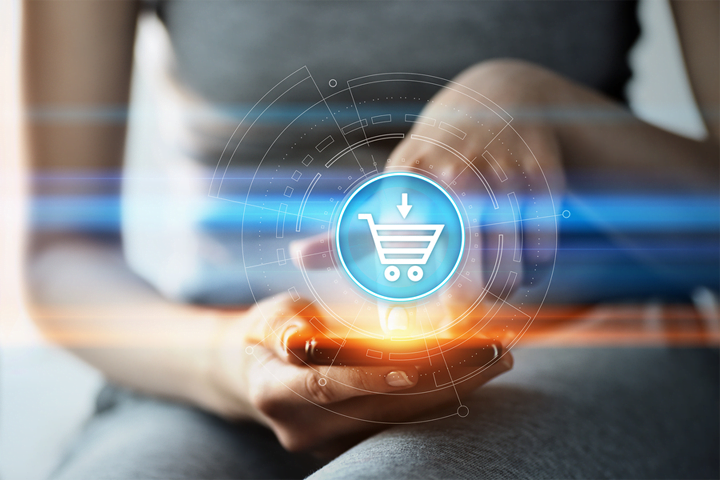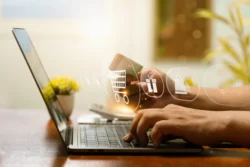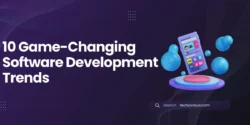E-commerce is a key business model nowadays, representing the act of buying or selling products and services via the internet. COVID-19 pandemic affected businesses, economics and social factors much. Considering recent lockdowns across the globe, buying and selling online is almost necessary if you want to keep your company growing (or even existing).
Many people have recently gained trust in ordering things online.This has also led to their engagement with some e-commerce businesses, or simply said – people developed a taste in websites. You know it yourself; some websites are simply attractive and easy to use, while others seem repulsive and complicated. What usually distinguishes these two is the web design.
Well thought-out web design for eCommerce can make your website stand out from the crowd and your business growing rapidly. These are the reasons why website design is important for your e-commerce conversions:
1. The first impression matters (a lot)
Studies have shown that we form an impression of a website in less than a second. That puts a lot of pressure on a web design, but if you make sure to follow these steps, they’ll break the ice:
1.1. Stick to the brand’s identity
You should make your brand’s logo visible and highlighted throughout the website. This is especially important if you sell your products in-store or through an app, too, because people should get the same feeling of knowing you no matter how they’re buying your products. Also, make sure the colors on the website are compliant with the logo.
1.2. Follow the visual hierarchy
Keep the important content placed above the fold, meaning – on the upper half of a page, visible without scrolling. If there’s too much of it, it’s better to sacrifice some white space rather than the content itself.
1.3. Keep it simple and harmonic
If you tend to use too many different fonts in terms of types and sizes (or even colors), it might start to look like an ad rather than trustworthy content.
1.4. Try to stay away from popup windows
Even though they’re useful marketing tools, they tend to distract some viewers who find them repelling.
2. Customers need to be navigated
You can tell how important navigation is. No one wants to wander around hopelessly trying to find what they’re searching for. This applies to in-store shopping as well, but even more when buying online. It’s hard enough to get out of your comfort zone and order something before trying it out, so making this process easy and understandable for your consumers is crucial. By doing so, you ensure none of your customers give up half-way through their purchase.
2.1. Let your search box be omnipresent
Simply typing down keywords of a product you’re searching for is the easiest way to get to it, so make sure your search box is visible on every page of the website, preferably in the same position as well. Including auto-complete is also vital if a person is unsure of the product’s name. Lastly, including filtering and sorting is a must because it speeds up the process and gets people to their desired product as quickly as possible.
2.2. Make a well-organized categories section
Those who are not looking for that one specific item should be provided with a product categories menu to search for products within the desired category. It’s best to keep your category labels simple, preferably as singular words. If some of your products are on sale, try to put them at the top of the categories list to draw attention and the viewer’s urge to see what’s on sale (because we all know they’re time-limited).
2.3. Provide the Quick view option
If people notice that they need to load a whole new page every time they ask for more details of a product, they might get annoyed. But, if they get a quick view in the form of a window on the page they’re currently at, odds are they’ll stay on the site for a longer time. By adding the “Add to cart” button, you’ll make their experience even more pleasant.
3. Let’s see how your product page should look like
As we’ve mentioned before, creating a comfortable environment for your customers is vital. Therefore, you need to bring your products close to them, mainly using good quality photos and detailed descriptions. The more they get to know it, the safer they feel at the time of ordering.
3.1. Photos
You want your photos to be large and high-quality, with a zoom option that allows the customers to see even the most delicate details of it. Most of the time, it’s best to use a white background; just make sure the product stands out nicely. Including videos is a big plus (with close-up shots). Aim to cover all the angles of the product too.
3.2. Information
If you provide a detailed description of your product, the chances of selling it go way up. Customers should get all the information they need to make a safe purchase. Write down all the materials used in the making, show availability, size chart, options to choose between different colors (if that’s possible), full price, etc. If they still have to contact you before making a purchase, you still haven’t done enough.
3.3. Related products
Are you familiar with cross-selling? It means selling an additional and related product to your existing customers. It’s a great way to achieve extra sales, so make sure to show related products on a product page.
3.4. Use psychology
If a person is thinking about buying a product, the number of remaining pieces matters a lot. For example, if you want to buy a pair of shoes and there’s only one pair left that’s your size, you’ll feel the urge to rush with your purchase before it’s sold out. So make sure to include this information on your product detail page.
4. Do the coloring
Research has shown how choosing the right colors for your website dramatically impacts conversions (combined with other elements of a web design). There’s a lot of science behind the topic of how colors influence our behavior, but long story short – they do. We’re often not aware of it, but colors trigger certain emotions and bring back memories. In addition to all of that – they make a great marketing tool. Let’s see how.
4.1. Learn what each color represents
When choosing a color for your website, you have to consider things like what you’re selling, who your audience is, how old they are, and so on. So let’s go through each color and see when and how you can implement it.
Blue is associated with calmness, trust, and loyalty. It’s often used in bank websites but also in the world’s most popular social media logo. If you’re selling food, stay away from this one (because, in this particular case, it’s associated with poison).
Green symbolizes nature itself, so it’s best to use it if you’re selling natural and organic products. It’s also powerful to use it for a CTA button, especially if it leads to purchase because green is also the color of a dollar bill.
Yellow tends to trigger anxiety (warning signs are usually yellow). Therefore, don’t overwhelm your pages with it, instead use it in small doses as the attention-grabber.
The same goes for orange, it’s one of the least favorite colors for marketing, but it can find its use in highlighting special offers and the ones on sale.
Black stands for elegance and luxury, and you’ll find it on many high-end eCommerce websites. It tells that what you’re selling is valuable and, therefore, probably pricey.
White is often neglected, but it represents space, freedom. It’s mainly used as a background color, though.
4.2. Different ways to combine colors
If you choose to make your website the same color as your logo, you can use that color only, but in different shades. Doing so brings harmony and little space for making mistakes.
Another way to combine colors is to use complementary ones, like Safex. You achieve this by using two opposing colors on the color wheel. This makes your site look cheerful, but it’s also effective in highlighting the CTA button.
You can also combine two colors next to each other on the color wheel (like green and yellow).
And lastly, you can combine three equidistant colors, or four make a double complementary combination that makes a rectangle on the color wheel.







